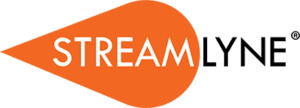
Every research administrator knows the frustration: your faculty are missing funding opportunities, spending countless hours on unproductive grant searches, and competing at a disadvantage against institutions with better research development infrastructure. You know a comprehensive grant software tool could solve these problems, but you need to convince university leadership to allocate budget. How do you make a compelling business case?
The good news is that grant software tool ROI is remarkably straightforward to calculate when you look at the complete picture. The challenge is ensuring your proposal addresses the concerns and priorities of different stakeholders—from CFOs focused on bottom-line costs to provosts concerned with faculty satisfaction and retention.
Understanding the True Cost of Manual Grant Discovery
Before presenting the benefits of a grant software tool, it’s essential to quantify what your current approach actually costs. Most institutions dramatically underestimate these expenses because they’re distributed across many individuals and don’t appear as a single line item in any budget.
Start by calculating research administrator time. How many hours per week does your research development staff spend on grant opportunity searches, compiling lists for faculty, and matching opportunities to researchers? Multiply this by their hourly cost (including benefits and overhead) and you’ll often find six-figure annual expenses at even moderately-sized research institutions.
Faculty time is even more valuable. When faculty members spend hours scrolling through grant databases or reading irrelevant funding announcements, that’s time not spent on research, teaching, or proposal development. A grant software tool that saves each active grant-seeking faculty member just two hours per month represents enormous aggregate value.
Don’t forget opportunity costs. How many fundable projects never get proposed because researchers weren’t aware of relevant opportunities? How many collaborative projects don’t happen because potential partners never connected? These missed opportunities are the most expensive cost of inadequate grant software tools, even though they never appear in any budget.
Quantifying Direct Financial Impact
The most straightforward ROI argument for a grant software tool focuses on increased funding secured. Even modest improvements in proposal submissions and success rates translate to substantial financial returns that dwarf the cost of the software.
Consider a mid-sized research institution with 200 active grant-seeking faculty. If a grant software tool helps just 10% of those researchers submit one additional competitive proposal per year, and 20% of those proposals are successful at an average award size of $300K, that’s $1.2 million in new funding annually. Most comprehensive grant software tools cost a small fraction of this amount.
The math becomes even more compelling at larger institutions or when considering indirect cost recovery. A major research university bringing in an additional $5 million in direct costs might see $2-3 million in indirect cost recovery, depending on negotiated rates. This recovered overhead can more than cover not just the grant software tool itself, but additional research infrastructure investments.
The Efficiency Multiplier Effect
Beyond direct funding increases, grant software tools create efficiency gains that ripple throughout the research enterprise. When research administrators spend less time on manual opportunity searches, they can provide more strategic support to faculty developing proposals. This higher-value support increases proposal quality, further improving success rates.
Faculty who can quickly find relevant funding opportunities spend less time frustrated with administrative processes and more time focused on their research. This improved experience contributes to higher retention rates—an increasingly important consideration given competitive faculty recruitment dynamics.
For sponsored programs offices, more strategic proposal submissions (better matched opportunities rather than spray-and-pray approaches) can actually reduce workload despite higher submission volumes. Processing a smaller number of well-matched proposals is more efficient than handling many poorly-matched applications that have little chance of success.
Addressing Common Leadership Concerns
When presenting a grant software tool investment to university leadership, anticipate and address common objections directly. CFOs often worry about committing to ongoing subscription costs. Emphasize that unlike capital equipment or facility investments, grant software tools require no maintenance infrastructure, no specialized IT support, and scale seamlessly as the institution grows.
Provosts may question whether faculty will actually use the tool. Provide adoption data from peer institutions and outline your change management strategy. Modern grant software tools with intuitive interfaces and mobile accessibility see much higher adoption than previous generations of clunky database systems.
Technology officers might raise integration concerns. Leading grant software tools are designed to work alongside existing systems, not require wholesale replacement of infrastructure. Look for platforms offering APIs, SSO integration, and connections to commonly-used collaboration tools like Slack and Microsoft Teams.
Building a Phased Implementation Plan
A common mistake in grant software tool proposals is asking for full institutional deployment from day one. Leadership is often more comfortable with a phased approach that demonstrates value before full commitment.
Consider proposing a pilot program focused on a single college or a cohort of enthusiastic early adopters. Set clear success metrics around opportunity discovery, proposal submissions, and user satisfaction. A six-month pilot generates compelling data for a full deployment request while limiting initial financial commitment.
Many grant software tool providers offer flexible licensing that accommodates phased rollouts. This allows you to demonstrate ROI with a smaller initial investment, then expand based on proven results.
The Strategic Positioning Argument
For research-intensive institutions, grant software tools are increasingly infrastructure, not luxury. When peer institutions provide faculty with sophisticated opportunity discovery and team-building tools, not doing so becomes a competitive disadvantage in both funding success and faculty recruitment.
Position grant software tool investment as strategic infrastructure that supports institutional research priorities. If your university has identified key research strengths or emerging areas of focus, demonstrate how a comprehensive grant software tool will help faculty in these areas find relevant funding and build collaborative teams.
The reputational impact of increased funding success compounds over time. Institutions known for helping faculty secure grants attract more grant-hungry faculty, creating a positive feedback loop that drives research reputation and rankings.
Leveraging External Benchmarking Data
Strengthen your business case by incorporating external data about grant software tool adoption and impact. Many platforms can provide aggregated, anonymized data showing funding increases at similar institutions after implementation.
HERD (Higher Education Research and Development) survey data can help benchmark your institution’s research expenditures against peers. If you’re lagging behind similar institutions in research funding, a grant software tool represents a clear strategy for closing that gap.
Professional associations like NCURA (National Council of University Research Administrators) and SRAI (Society of Research Administrators International) publish resources about research development best practices. Citing these professional standards adds credibility to your proposal.
Creating Champions Across Stakeholder Groups
The most successful grant software tool implementations have champions at multiple levels. Beyond research administration, cultivate support from enthusiastic faculty who can speak to the researcher experience, from deans who understand college-level strategic priorities, and from IT leadership who can address technical questions.
Consider forming a cross-functional evaluation committee that includes representatives from these different groups. When university leadership hears consistent support from multiple constituencies, they’re much more likely to approve the investment.
Personal testimonials are powerful. If you can arrange for leadership to hear directly from faculty at peer institutions who have benefited from grant software tools, those real-world success stories often carry more weight than any data-driven presentation.
Measuring and Communicating Success
Once you’ve secured approval for a grant software tool, the work of demonstrating ROI continues. Establish clear metrics from day one and report progress regularly to stakeholders. Track not just funding outcomes, but also leading indicators like user adoption, opportunity discoveries, and researcher satisfaction.
Celebrate wins publicly. When faculty secure funding for projects they discovered through the grant software tool, share those success stories widely. These narratives help maintain institutional support and encourage broader adoption.
Be transparent about challenges too. No tool solves every problem instantly. Acknowledging areas for improvement while demonstrating overall positive trajectory builds credibility and trust.
Your Next Step Toward Increased Research Funding
Making the business case for a grant software tool investment requires addressing both quantitative ROI and qualitative strategic value. The good news is that the data overwhelmingly supports these investments—institutions that provide faculty with sophisticated grant discovery and team-building tools see measurable increases in funding success.
FundFit AI is designed specifically to deliver compelling ROI for research institutions. With AI-powered opportunity discovery, comprehensive team-building tools, and HERD Survey integration included at no additional cost, FundFit provides everything you need to make a strong business case to your leadership.
Request a demo and see how FundFit can increase your institution’s research funding: https://streamlyne.com/fundfit

